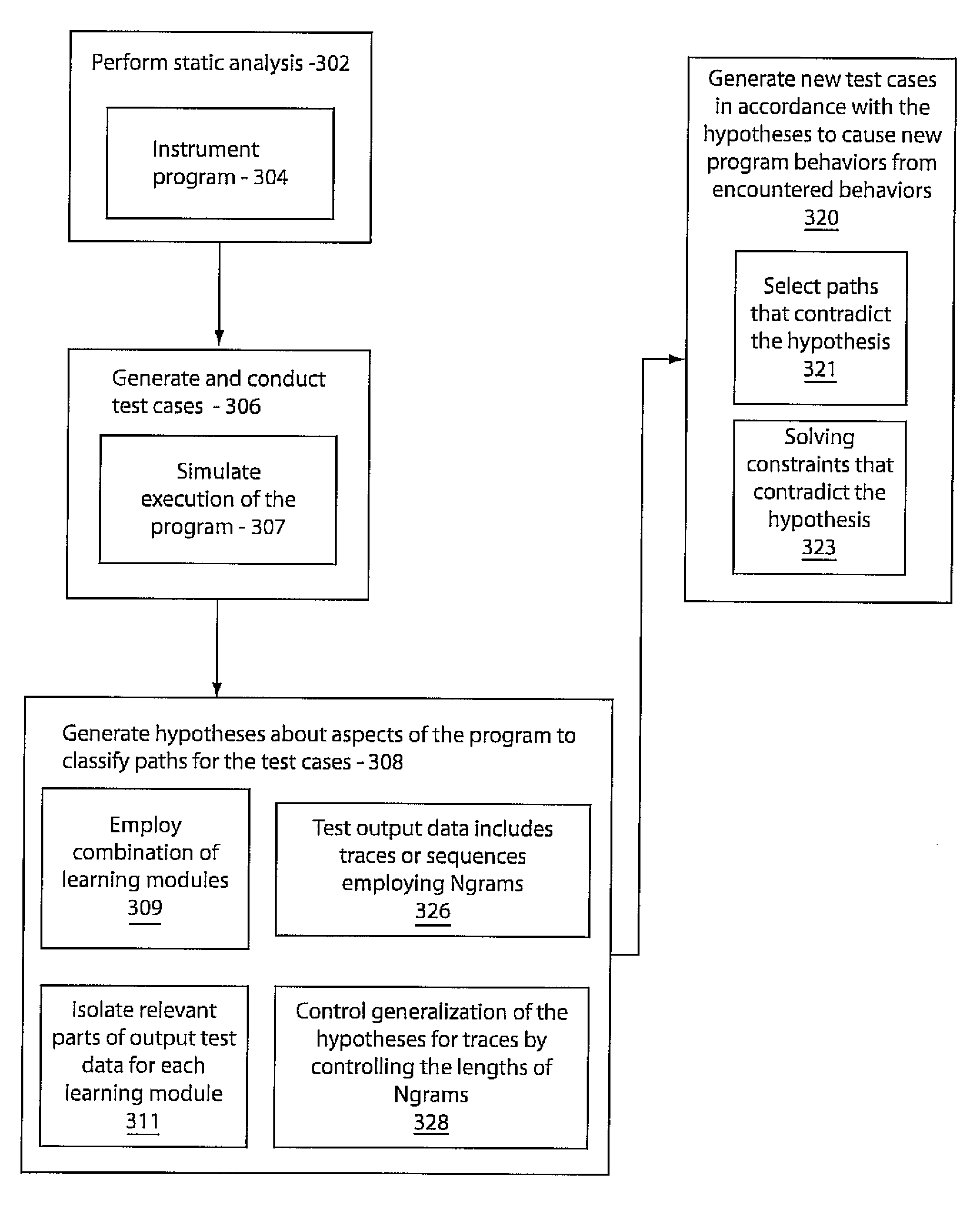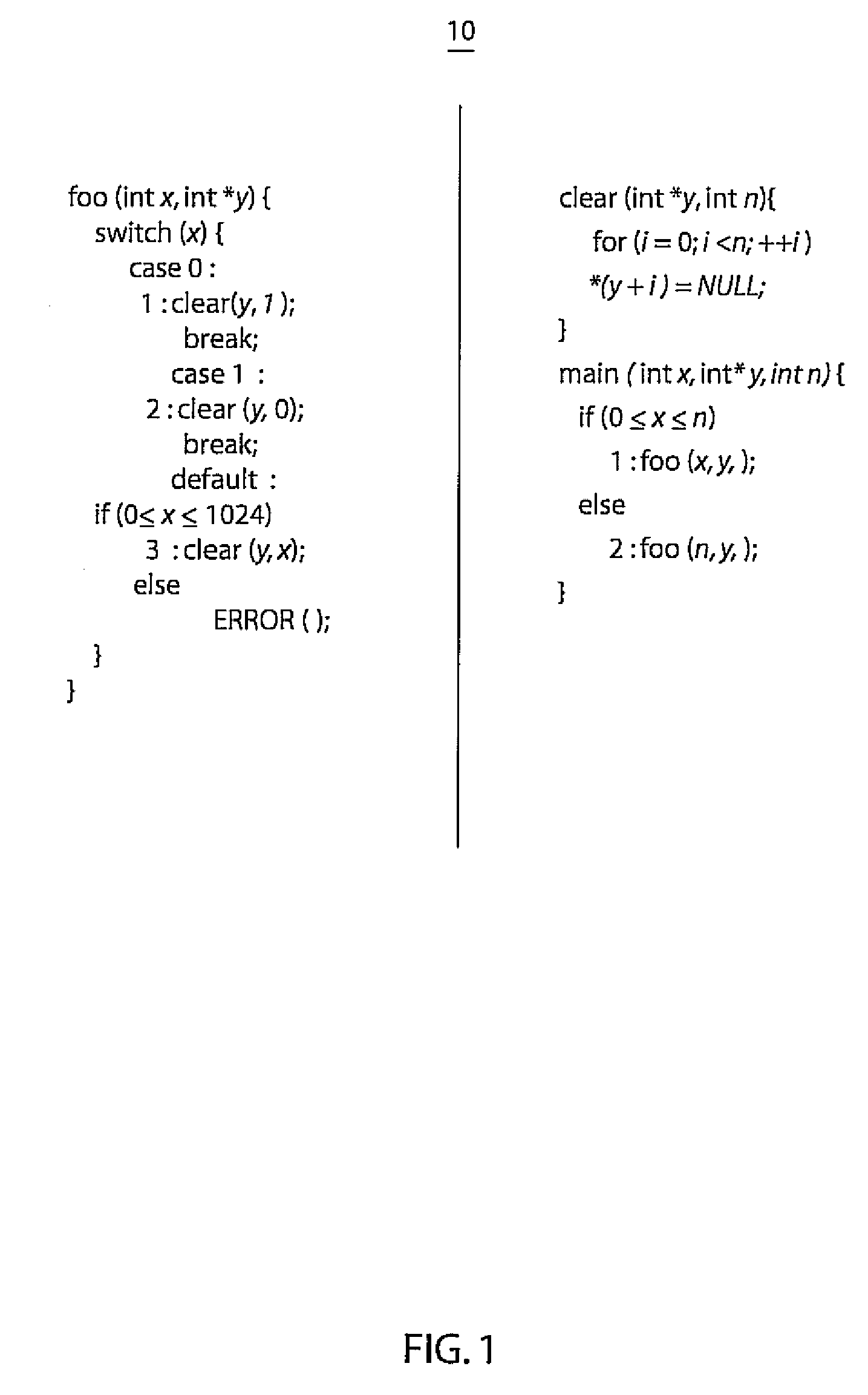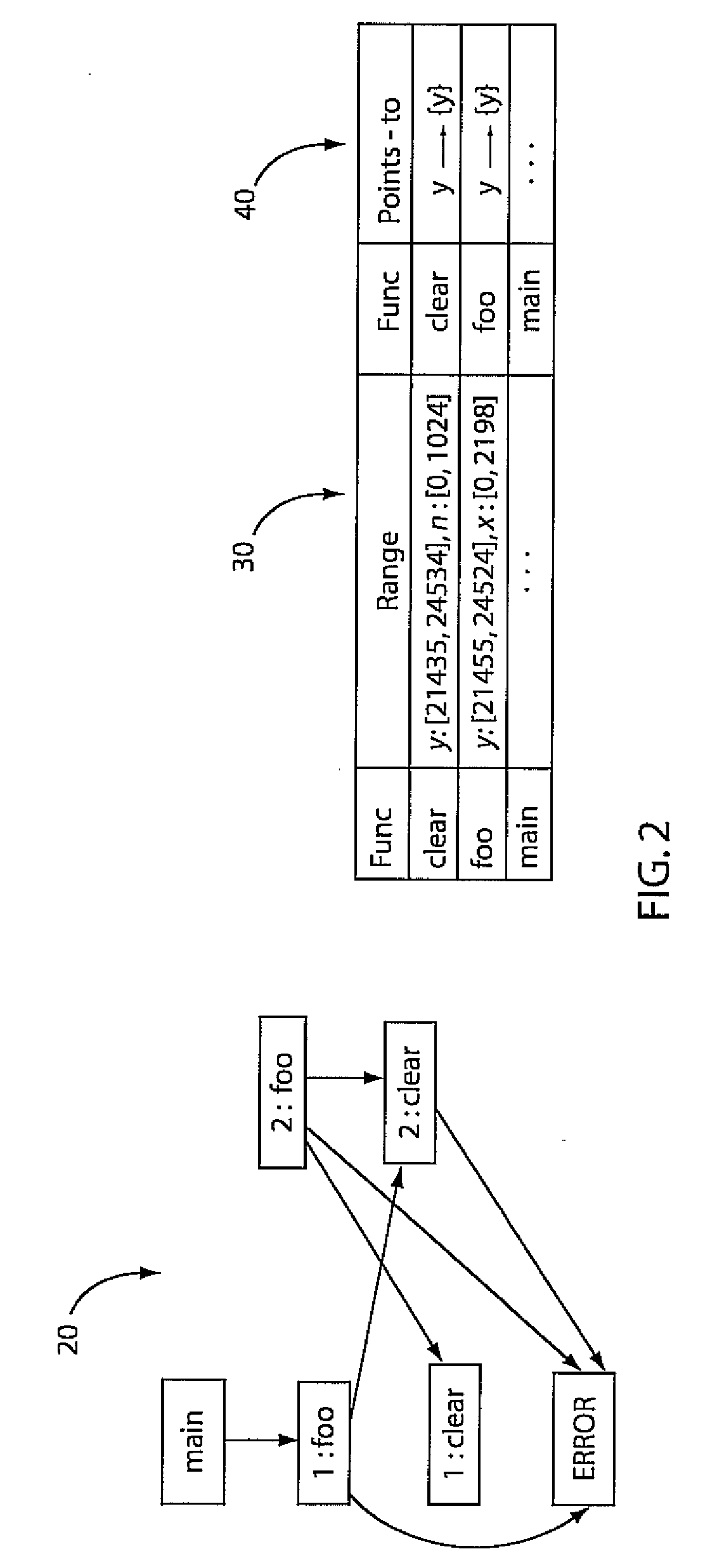Software testing using machine learning
a machine learning and software testing technology, applied in the field of software testing/verification, can solve the problems of insufficient testing, prohibitive coverage of large software systems, and insufficient coverage,
- Summary
- Abstract
- Description
- Claims
- Application Information
AI Technical Summary
Benefits of technology
Problems solved by technology
Method used
Image
Examples
Embodiment Construction
[0019]Embodiments in accordance with the present principles provide an approach to bug finding using directed test generation based on learning properties from an output. At each iteration, the tests from the previous iterations are run and different aspects of the test output are fed to learning modules to learn general properties of the test outputs so far. These aspects may include function call sequences from which we may learn an automaton characterizing the function calls in test data, or variable values at a specific point in the program from which we may learn likely program invariants.
[0020]The properties thus learned are fed into a test generation module that statically searches for program paths violating the properties asserted by the learner. The test generation then searches for appropriate inputs that exercise some of the violating paths. The tests from these paths are executed and their outputs added to the testing data pool. Each iteration uses the learner as a guid...
PUM
 Login to View More
Login to View More Abstract
Description
Claims
Application Information
 Login to View More
Login to View More - R&D
- Intellectual Property
- Life Sciences
- Materials
- Tech Scout
- Unparalleled Data Quality
- Higher Quality Content
- 60% Fewer Hallucinations
Browse by: Latest US Patents, China's latest patents, Technical Efficacy Thesaurus, Application Domain, Technology Topic, Popular Technical Reports.
© 2025 PatSnap. All rights reserved.Legal|Privacy policy|Modern Slavery Act Transparency Statement|Sitemap|About US| Contact US: help@patsnap.com



